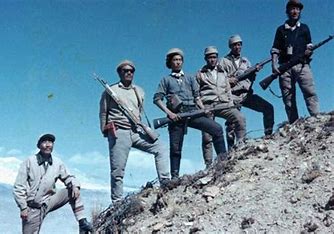The Beijing-recognized Panchen Lama, Gyaltsen Norbu, is seen by many Tibetans as a political puppet.
In the heart of Tibet, a silent yet powerful form of resistance is taking place. Across monasteries, homes, and public spaces, the image of the 10th Panchen Lama, Choekyi Gyaltsen, is prominently displayed. This act is not just a tribute to a revered spiritual leader but a profound statement against the Chinese government’s attempts to control Tibetan Buddhism.
The 10th Panchen Lama, Choekyi Gyaltsen, is deeply respected among Tibetans for his unwavering dedication to preserving Tibetan culture and religion under Chinese rule. Born in 1938, he became a vocal advocate for Tibetan rights and criticized the Chinese government’s policies in Tibet. His 70,000-character petition in 1962, which detailed the suffering of Tibetans under Chinese rule, remains a seminal document of resistance.
In stark contrast, the Beijing-recognized Panchen Lama, Gyaltsen Norbu, is seen by many Tibetans as a political puppet. In 1995, the Chinese government rejected the Dalai Lama’s choice of Gedhun Choekyi Nyima as the 11th Panchen Lama and instead installed Gyaltsen Norbu. Gedhun Choekyi Nyima was subsequently taken into custody and has not been seen since. This move was widely perceived as an attempt by Beijing to control the spiritual lineage and diminish the influence of the Dalai Lama.
Displaying the photo of the 10th Panchen Lama is a way for Tibetans to honour his legacy and assert their cultural identity. It is a reminder of his courage and his commitment to the Tibetan cause. For many, the 10th Panchen Lama symbolizes the true spirit of Tibetan Buddhism, untainted by political interference.
Moreover, this act of defiance is a form of non-violent resistance. By rejecting the Beijing-recognized Panchen Lama, Tibetans are making a clear statement about their refusal to accept Chinese control over their religious practices. It is a way to keep the memory of the 10th Panchen Lama alive and to inspire future generations to continue the struggle for religious and cultural freedom.
The Chinese government’s attempt to control the reincarnation process of Tibetan lamas is part of a broader strategy to assimilate Tibetan culture into the dominant Han Chinese narrative. By installing a state-approved Panchen Lama, Beijing aims to weaken the influence of the Dalai Lama and ensure that Tibetan Buddhism aligns with state ideologies.
However, the widespread display of the 10th Panchen Lama’s photo shows that these efforts have not succeeded. It highlights the resilience of the Tibetan people and their determination to preserve their cultural and religious heritage. This act of resistance is a powerful reminder that despite decades of repression, the spirit of Tibetan Buddhism remains strong.
The choice to display the photo of the 10th Panchen Lama is a deeply symbolic act for Tibetans. It honors a leader who stood up for their rights and serves as a form of peaceful resistance against Chinese control. As the world watches, it is crucial to support the Tibetan people’s right to religious freedom and cultural preservation. The legacy of the 10th Panchen Lama continues to inspire and empower Tibetans in their ongoing struggle for autonomy and dignity.
The Dalai Lama’s nephew, Khedroob Thondup is a geopolitical analyst.

